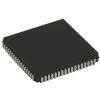W65C22S: Features: • Advanced CMOS process technology for low power consumption• Compatible with NMOS 6522 devices• Low power consumption• Two 8-bit, bi-directional peripheral I/O Por...
floor Price/Ceiling Price
- Part Number:
- W65C22S
- Supply Ability:
- 5000
Price Break
- Qty
- 1~5000
- Unit Price
- Negotiable
- Processing time
- 15 Days
SeekIC Buyer Protection PLUS - newly updated for 2013!
- Escrow Protection.
- Guaranteed refunds.
- Secure payments.
- Learn more >>
Month Sales
268 Transactions
Payment Methods
All payment methods are secure and covered by SeekIC Buyer Protection PLUS.

 W65C22S Data Sheet
W65C22S Data Sheet








